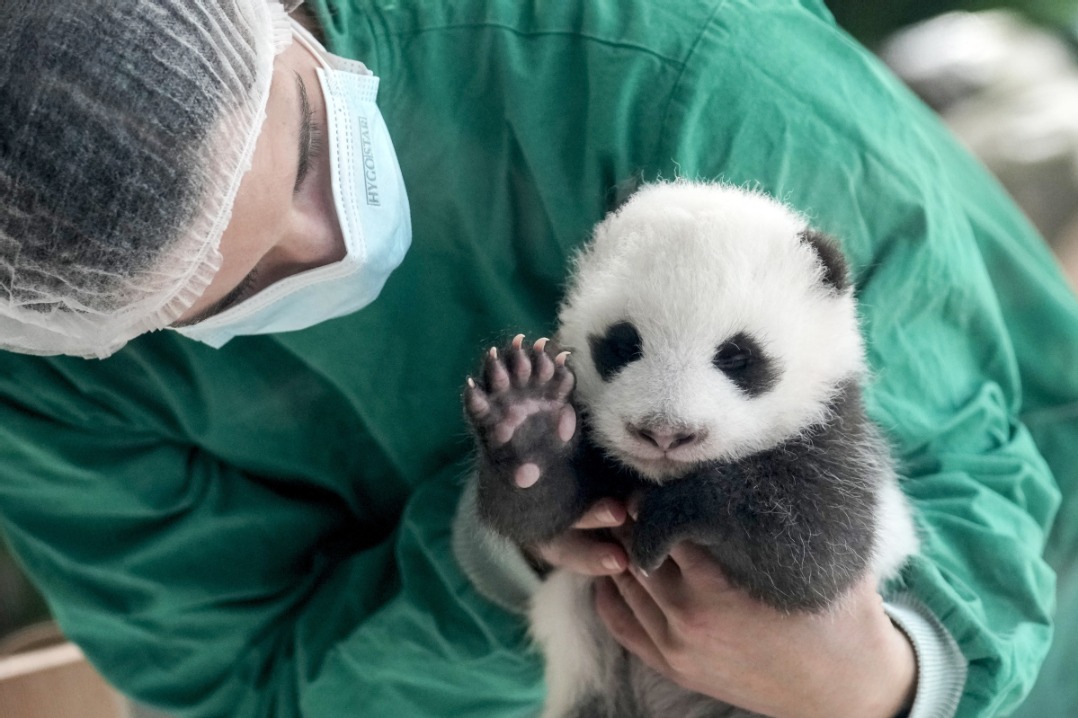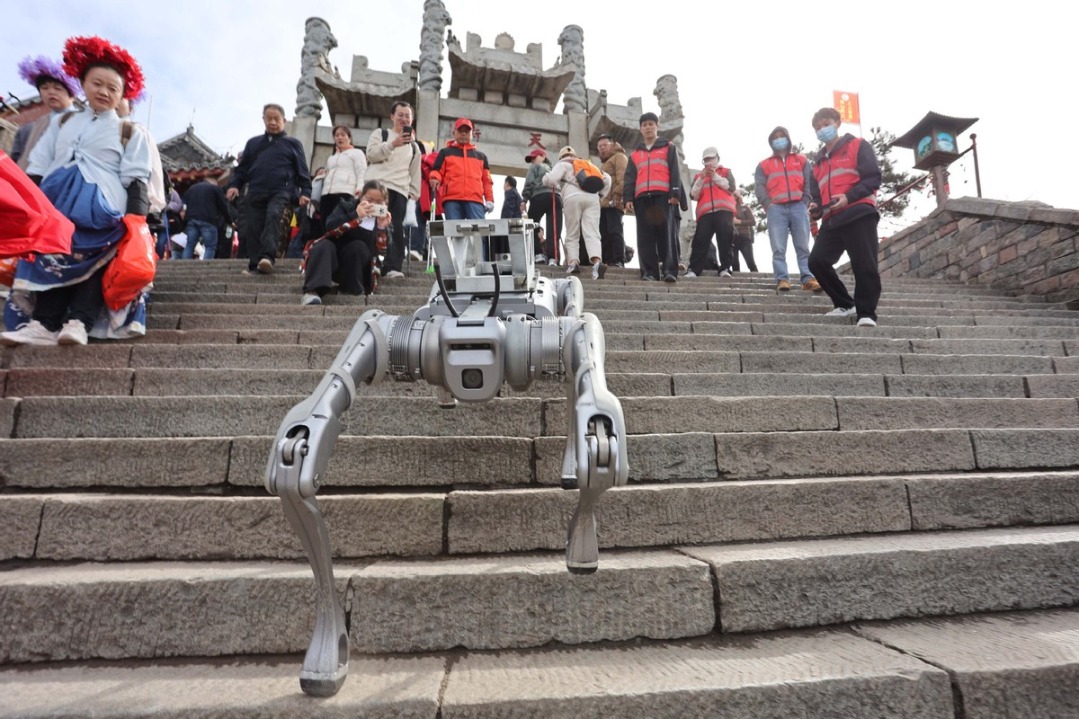Decade on, Belt, Road helping uplift developing world
By Fan Zhiyong | China Daily | Updated: 2023-10-09 09:10

In a visionary move, in September 2013, President Xi Jinping proposed the initiative of constructing the Silk Road Economic Belt and the 21st Century Maritime Silk Road. This year marks the 10th anniversary of the Belt and Road Initiative, and the upcoming third Belt and Road Forum for International Cooperation will be hosted in China.
The BRI has actively embraced multilayered bilateral and multilateral cooperation and various regional collaboration platforms ever since it was first established. Drawing inspiration from the ancient Silk Road, it champions the principle of peaceful development while actively fostering economic partnerships with countries involved in the BRI, working toward a community of shared interests, future and responsibility, marked by mutual political trust, economic integration and cultural inclusiveness.
More than an initiative for economic and trade collaboration, it opens new pathways to help realize China's model of modernization and offers fresh possibilities for other developing countries to achieve their own respective modern development. In the annals of human history, closed economies have proved insufficient for modernization — the growth of international trade and cross-border flows of people, goods and capital together constitute the imperative route to modernization for all economies.
Historically, whether during the Age of Discovery or the ignominious triangular trade, modernization of developed countries in the West was often associated with colonial warfare and exploitation, inflicting profound suffering upon the peoples of colonized nations.
In contrast, China's path to modernization embodies a peaceful journey. The 19th National Congress of the Communist Party of China emphasized China's commitment to an open policy and a win-win outcome based on mutual benefits. It will continually provide opportunities for the rest of the world through its new development paradigm, advancing the construction of an open global economy for the collective well-being of all nations.
From the outset, the BRI articulated five development goals for participating countries — policy coordination, facility connectivity, unimpeded trade, financial integration and people-to-people connections. Going beyond formal agreements and infrastructure investment, the initiative's enduring value lies in genuine and deep people-to-people ties, forging a beautiful vision where people from diverse cultures unite to construct a better global community.
The initiative has evolved into an internationally acclaimed platform for open, inclusive, mutually beneficial and win-win international cooperation over the past decade, and has been warmly advocated by an increasing number of countries. According to official statistics, as of January 2023, 151 countries and 32 international organizations have signed over 200 cooperation agreements with China under the BRI framework. By aligning their national development strategies with the initiative, participating countries have discovered new opportunities on a broader platform to achieve their development objectives.
The BRI also provides new ideas for economic re-globalization. In recent years, driven primarily by their self-interests, Western developed countries have intensified protectionism, posing significant challenges to economic globalization. Consequently, many countries, especially developing ones, find themselves at risk of missing out on the benefits of globalization and economic and social progress.
Within the BRI, it has been China that steadfastly upholds the role of pushing forward economic globalization, promoting trade and investment liberalization, facilitating bilateral, regional and multilateral cooperation, enhancing international policy coordination, collectively creating an international environment conducive to development, nurturing new engines of global growth, and actively supporting the acceleration of development in developing countries.
From a historical view, inadequate infrastructure has been a critical impediment to the progress of developing countries. Based on the concept of "club convergence "in economic theories, a nation's initial per capita level determines its eventual level of economic development. Barriers such as educational limitations, lack of resources or poor infrastructure prevent economically challenged countries from moving to a higher convergence club. These factors make it nearly impossible for a country in one convergence club to move to higher convergence club. In simpler terms, poor nations remain poor because they were poor in the past. According to this theory, one way to help developing countries escape poverty is to increase their capital stock, primarily through infrastructure development.
However, due to weak construction, operation and management capabilities — as well as a shortage of skilled personnel, mere financial assistance has failed to lift these economies from their underdeveloped predicaments. This is why many BRI projects, through bilateral and multilateral cooperation, have enabled countries to enhance their local infrastructure while involving China in their operation and management. This approach has helped cultivate a large pool of skilled workers and managers, providing a continuous impetus for sustainable local economic development.
In Africa, the Mombasa-Nairobi Standard Gauge Railway, constructed by Chinese enterprises, has played a vital role in Kenya's social and economic development. In Asia, since its inauguration in December 2021, the China-Laos Railway, despite the impact of the COVID-19 pandemic, had transported over 20 million passengers as of August. The Jakarta-Bandung High-speed Railway, involving Chinese participation, also commenced operations in September, and is expected to help boost Indonesia's economy. The forthcoming China-Kyrgyzstan-Uzbekistan Railway will also greatly facilitate economic and trade exchanges between China and Central Asian countries, further enhancing regional economic integration.
As an initiative that has drawn participation from over three-quarters of the world's nations and numerous international organizations, the BRI enjoys broad approval from the international community, especially from developing countries. In its early stages, collaboration between China and other BRI countries was primarily manifested in large-scale infrastructure and investment projects, with Chinese State-owned enterprises playing a major role. However, as bilateral and multilateral exchanges deepen, the initiative has entered a new phase, influencing day-to-day lives of people in all Belt and Road countries.
An example of deepened cooperation taking on various forms is the Luban Workshop. Pioneered in Tianjin, it has rapidly expanded in BRI countries. As of today, China has established 27 Luban Workshops in 25 countries, covering fields such as railway operation, new energy, Chinese cuisine and traditional Chinese medicine. These projects have not only cultivated internationalized local talent for BRI partner countries, but also created employment opportunities, significantly improving local livelihoods through participation in cooperative projects.
Chinese products, renowned for their high quality and competitive prices, are gradually gaining recognition and favor among consumers worldwide. Beyond everyday consumer goods infiltrating people's lives, technological advancements have established durable Chinese products as reputable choices in foreign markets. Chinese products have even become fashionable possessions in some countries and regions. In the first half, China surpassed Japan to become the world's largest exporter of automobiles, with one-fourth of these exports being electric vehicles. EVs, representing the future direction of technological development and the green consumption trend, are becoming a new hallmark of Chinese manufacturing.
The BRI is reshaping daily lives of people in China and other BRI countries. It reaffirms the belief that open cooperation is the right path to shared prosperity. Undoubtedly, in the future, the initiative will bring about further changes in people's livelihoods and offer more opportunities for economic development to countries around the world.
The writer is a professor with the School of Economics at the Renmin University of China. This article is translation of a Chinese piece published on the WeChat account of the China Macroeconomy Forum, a think tank.
The views do not necessarily reflect those of China Daily.
























